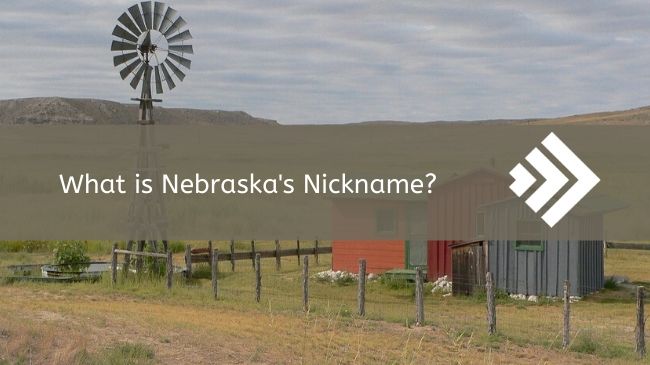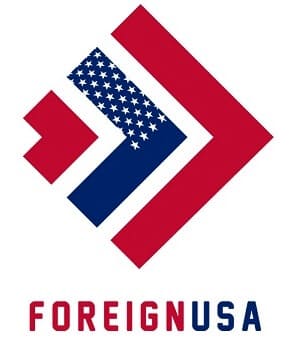Nicknames are common for people and sports teams, but why would a U.S. state have a nickname? The 50 States in the U.S. all have special and different qualities that they like to highlight, some of which are used to attract people to the state, whether that be to live there, or just visit the state for a vacation, while others are simply rooted in long-standing history.
Many states developed an initial nickname after they entered the union 100-200+ years ago, but not all state nicknames have stuck with each state over the years, and many have developed additional nicknames or primary nicknames that they identify with the most or that set them apart from other states. States take their nicknames from various sources so let’s take a look at Nebraska’s nickname.

What is Nebraska’s nickname? It is The Cornhusker State.
Nebraska is located in both the Great Plains and in the Midwestern United States, bordered by 6 other states! South Dakota from the North, Iowa from the East, and Missouri from the Southeast, across the Mississippi River. Nebraska also borders Kansas to the South, Colorado to the Southwest, and Wyoming to the West.
Nebraska’s State Nickname
Nebraska’s state nickname was originally adopted in 1945 after replacing the previous nickname of “The Tree Planters State”, approximately 122 years after the state’s inception on March, 1st, 1867. “The Cornhusker State” is believed to be derived from when the early explorers would refer to Nebraska and surrounding areas as part of the great American desert. If you are interested in seeing the US state nicknames for all 50 states, including the date each state was entered into the Union, then head over to our page that lists them in alphabetical order.
In the early 1860s, the first wave of inhabitants made their way to Nebraska to claim the free land granted by the federal government. Due to the vast, grassy land covering Nebraska, these settlers had to build their homes out of sod because of the lack of building materials such as wood from trees.
Nebraska has a deep history consisting of these rugged settlers taking advantage of the land Nebraska had to offer, creating farms and ranches out of the vast desert space. Since these times, Nebraska has become a leading state in agriculture, considered to be a bread-basket for the United States and much of the world too!
Nebraska’s state nickname was actually derived from the nickname for the University of Nebraska athletic teams, “The Cornhuskers”. Husking corn was commonly done by hand by the early settlers, back in the 1800s they didn’t have husking machinery!
Nebraska Nicknames
Similar to many other states, Nebraska has adopted multiple nicknames over the years, all used to identify the state in one way or another. Obviously, the main nickname of “Cornhusker State” takes the spotlight comparatively, but there are many states that are better known for some of the non-official nicknames they have adopted over the years. It is no secret that the other Nebraska nicknames are not as famous as Nebraska’s state nickname, however, they are still worth knowing.
- The Tree Planters State – officially adopted on April 4th, 1895, this Nebraska state nickname was used as a more fitting representation of the state than others at the time. Derived from the sheer number of trees planted by the early state settlers as windbreaks, orchards, and fuel, this nickname lasted 55 years before being subsequently replaced by Nebraska’s nickname today.
- The Beef State – this nickname pays homage to one of Nebraska’s leading industries; beef production. There is approximately 2 million head of beef cows in Nebraska, making it fairly obvious as to why many refer to the state as “The Beef State”. This nickname made it onto Nebraska license plates from the mid-1950s to the mid-1960s.
- The Antelope State – this nickname refers to the abundance of antelope that resided in the state’s prairies in the late 1800s.
- The Bug-Eating State – this nickname references the number of bull bats that populate Nebraska, these bats are notorious for their bug-eating tendencies and are understandably labeled by many Nebraskans as “Bug-Eaters”.
- The Blackwater State – Nebraska was sometimes referred to as “The Blackwater State” due to the rich black Nebraska soil that resulted in many streams and rivers becoming very dark in color.
Now that you know what the Nebraska state nickname is, as well as the other Nebraska nicknames, it makes sense to take a look at Nebraska’s state motto. All states have a unique state motto/slogan, usually from an event linked with the state’s historical past, mottos tend to be given to the state as a representation of the people past and present.
Nebraska’s motto, “Equality Before The Law” highlights the belief that every person is entitled to be treated fairly, and to be given freedom, despite status and religious convictions. This motto was officially adopted in 1867 and makes an appearance on the state flag and the state seal.
If you are interested in learning about the Nebraska State abbreviation, take a look at our page dedicated to this. The Nebraska postal abbreviation is often confused with other states that have similar letters in them and begin with the letters “Ne” – knowing and memorizing these state abbreviations is highly recommended for many different reasons.


